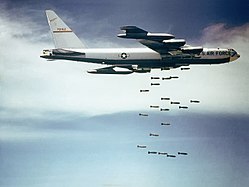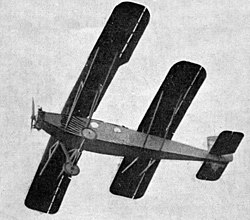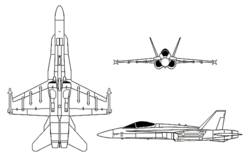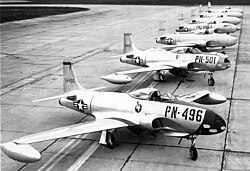3 lifting bodys
Autor/Urheber:
NASA/DFRC
Shortlink:
Quelle:
Größe:
3000 x 2352 Pixel (3963380 Bytes)
Beschreibung:
The wingless, lifting body aircraft sitting on Rogers Dry Lake at what is now NASA's Dryden Flight Research Center, Edwards, California, from left to right are the X-24A, M2-F3 and the HL-10.The lifting body aircraft studied the feasibility of maneuvering and landing an aerodynamic craft designed for reentry from space. These lifting bodies were air launched by a B-52 mother ship, then flew powered by their own rocket engines before making an unpowered approach and landing. They helped validate the concept that a space shuttle could make accurate landings without power. The X-24A flew from April 17, 1969 to June 4, 1971. The M2-F3 flew from June 2, 1970 until December 20, 1972. The HL-10 flew from December 22, 1966 until July 17, 1970 and logged the highest and fastest records in the lifting body program. The X-24 was one of a group of lifting bodies flown by the NASA Flight Research Center (now Dryden Flight Research Center), Edwards, California, in a joint program with the U.S. Air Force at Edwards Air Force Base from 1963 to 1975. The lifting bodies were used to demonstrate the ability of pilots to maneuver and safely land wingless vehicles designed to fly back to Earth from space and be landed like an airplane at a predetermined site. Lifting bodies' aerodynamic lift, essential to flight in the atmosphere, was obtained from their shape. The addition of fins and control surfaces allowed the pilots to stabilize and control the vehicles and regulate their flight paths. Built by Martin Aircraft Company, Maryland, for the U.S. Air Force, the X-24A was a bulbous vehicle shaped like a teardrop with three vertical fins at the rear for directional control. It weighed 6,270 pounds, was 24.5 feet long and 11.5 feet wide (measuring just the fuselage, not the distance between the tips of the outboard fins). Its first unpowered glide flight was on April 17, 1969, with Air Force Maj. Jerauld Gentry at the controls. Gentry also piloted its first powered flight on March 19, 1970. The X-24A was flown 28 times in the program that, like the HL-10, validated the concept that a Space Shuttle vehicle could be landed unpowered. The fastest speed achieved by the X-24A was 1,036 miles per hour (mph--Mach 1.6). Its maximum altitude was 71,400 feet. It was powered by an XLR-11 rocket engine with a maximum theoretical vacuum thrust of 8,480 pounds. The X-24A was later modified into the X-24B. The bulbous shape of the X-24A was converted into a "flying flatiron" shape with a rounded top, flat bottom, and double delta platform that ended in a pointed nose. The X-24B demonstrated that accurate unpowered reentry vehicle landings were operationally feasible. Top speed achieved by the X-24B was 1,164 mph and the highest altitude it reached was 74,130 feet. The vehicle is on display at the Air Force Museum, Wright-Patterson Air Force Base, Ohio. The pilot on the last powered flight of the X-24B was Bill Dana, who also flew the last X-15 flight about seven years earlier. The X-24A shape was later borrowed for the X-38 Crew Return Vehicle (CRV) technology demonstrator for the International Space Station. The X-24B is on public display at the Air Force Museum, Wright-Patterson AFB, Ohio. The M2-F3 was a modified version of the M2-F2. NASA pilots said the M2-F2 had lateral control problems, even though it had a stability augmentation control system. When the M2-F2 was rebuilt at Dryden and redesignated the M2-F3, it was modified with an additional third vertical fin--centered between the tip fins--to improve control characteristics. The first flight of the M2-F3, with NASA pilot Bill Dana at the controls, was on June 2, 1970. It was a glide flight to evaluate changes in the vehicle's performance due to the modifications. The modified vehicle exhibited much better lateral stability and control characteristics than had the M2-F2. Over the next 26 missions, the M2-F3 reached a top speed of l,064 mph (Mach 1.6). Bill Dana was the pilot, and the high-speed flight took place on December 13, 1972. The highest altitude reached by the vehicle was 71,500 feet on December 21, 1972, the date of its last flight, with NASA pilot John Manke at the controls. A reaction jet control system, similar to thrusters used on orbiting spacecraft, was also installed to obtain research data about their effectiveness for vehicle control. As the M2-F3's portion of the lifting body program neared an end, it evaluated a rate command augmentation control system, and a side-arm control stick similar to side-arm controllers now used on many modern aircraft. The M2-F3 is now on display in the National Air and Space Museum, Washington, D. C. The HL-10 was delivered to the FRC by Northrop in January 1966. Its first flight was on December 22 of the same year. The pilot was Bruce Peterson. The HL-10 was flown 37 times and it set several program records. On February 18, 1970, Air Force test pilot Maj. Peter Hoag flew it to 1,228 mph (Mach 1.86), fastest speed of any of the lifting bodies. Nine days later, NASA's Bill Dana flew the HL-10 to 90,303 feet, the highest altitude reached by any of the lifting body vehicles. The HL-10 was also the first lifting body to fly supersonically--on May 9, 1969, with Manke at the controls. The HL-10 featured a flat bottom and rounded top--much like an airfoil--and it had a delta planform. In its final configuration, three vertical fins, two of them canted outwards from the body and a tall center fin, gave the craft directional control. A flush canopy blended into the smooth rounded nose. It was about 21 feet long, with a span of 13.6 feet. Its glide-flight weight was 6,473 lbs. and its maximum gross weight was over 10,000 lbs. Flights with the HL-10 contributed substantially to the decision to design the space shuttles without air-breathing engines that would have been used for landings. Its final flight was on July 17, 1970. The HL-10 is now on public display at Dryden.
Lizenz:
Public domain
Credit:
Relevante Bilder
Relevante Artikel
FlugzeugEin Flugzeug ist ein Luftfahrzeug, das schwerer als Luft ist und den zu seinem Fliegen nötigen dynamischen Auftrieb mit nicht-rotierenden Auftriebsflächen erzeugt. In der enger gefassten Definition der Internationalen Zivilluftfahrtorganisation (ICAO) ist es auch immer ein motorisiertes Luftfahrzeug. Der Betrieb von Flugzeugen, die am Luftverkehr teilnehmen, wird durch Luftverkehrsgesetze geregelt. .. weiterlesen










































